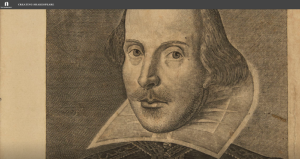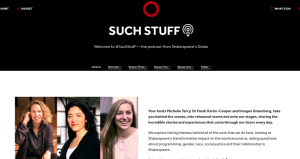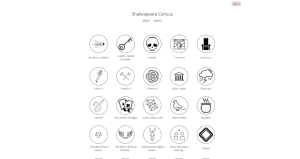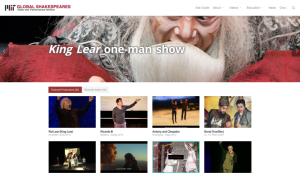General Interest
Back to Top
|
 |
|
Stated Clearly
|
Science |
|
As the name suggests, Stated Clearly uses "short animations" and "neutral language" to expose "people from all walks of life to the simple beauty of science." Founded in 2012 by Jon Perry, "an artist and science advocate," this YouTube channel uses narrative and animations to demonstrate that "science is for everyone." The channel currently features more than 30 videos, most of which are under ten minutes long. The topics cover biology, chemistry, and genetics, and seek answer both big and small questions - from "What is life?" to "What is a molecule?" With over 274,000 subscribers, the channel's light-hearted but thorough tone appeals to a wide audience. Middle-school teachers may find the videos particularly useful, as they provide brief explanations and definitions of key scientific concepts to compliment lesson plans. For example, in "What Is an Atom and How Do We Know?" (one of the most popular videos on the channel) viewers are transported back to 400 BCE and taken on a journey to present day to show "how scientists went about figuring all this out." From discovery in Ancient Greece to modern microscopes, the video highlights the many experiments and breakthroughs that contributed to our modern understanding. Additionally, select videos are available in Spanish and Arabic, and Stated Clearly recently launched a side channel, Claramente Explicado, dedicated to Spanish translations of the videos. [EMB] |
|





|
|
 |
|
The Pudding: Laughing On Line
|
Language Arts |
|
As most people who spend a significant amount of time online can likely attest, there are many different text-based ways to express laughter on the internet. Ever wonder which type of laugh is the most common, or if your preferred internet laugh really means what you think it does? Laughing On Line, an interactive visual essay published by The Pudding in October 2019, addresses these questions by "tak[ing] a closer look at the usage, evolution, and perception of the digital laugh." In the first section that readers encounter, they are asked "How funny is it?" Those who wish to answer can choose from a variety of internet laughs such as "heh," "sksksk," and the classic "lol," and then use a slider to indicate what they are actually doing when they use that type of laugh. Readers can also view the total responses without answering. The next section graphs how the popularity of "lol" and several other laughs have changed over time since 2009, while the third section digs into the most popular laughs of 2019. Laughing On Line was created by Russell Goldenberg, Kishan Sheth, Caitlyn Ralph, and Jan Diehm. [JDC] |
|





|
|
 |
|
The Journal of Stories in Science
|
Science |
|
Launched in 2016, the Journal of Stories in Science is a publishing platform and citizen science project managed by the Boston-based STEM Advocacy Institute. Among its goals, this unique project aims "to understand people's connections and journeys in science [and] to publish inspiring and thought-provoking stories in science from around the world." On the main page, visitors can scroll down to see the project's most recently published stories, as well as examples from North America, South America, Africa, Europe, and Asia. As of this write-up, the Stories in Science Project has published more than 160 accounts from contributors worldwide. In addition to browsing the stories from the main page, visitors can also use the Search page to filter the collection by fields such as gender, career stage, location, type of science, and more. This database of diverse stories may be of particular interest to STEM educators in search of authentic stories to offer their students about real people in science, the challenges they've encountered, and how they overcame those challenges. For those interested in writing about their own science story, the Submit page provides detailed guidelines and helpful advice. [JDC] |
|





|
|
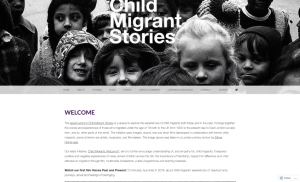 |
|
Child Migrant Stories
|
Social studies |
|
Readers interested in learning about the stories and experiences of children who migrated to East London between 1930 and the present day may enjoy Child Migrant Stories. The project was launched in 2016 with inspiration from Dr. Eithne Nightingale's research on "life stories of departure, arrival, and settlement [in East London]." Through pictures, films, and biographies, this website explores the meaning of "home" and the multi-cultural narratives that shape it. Users may want to begin by navigating the East London Stories tab (under the Stories drop-down menu), which will bring them to a database of images. By clicking on each image, users can read the story of a child who migrated to Hackney, Tower Hamlets, or Newham, East London, sharing their origin and the reasons for their journey. The stories encapsulate a spectrum of feelings, from "poignant [to] powerful [to] sometimes very funny." The website also features several short films, which depict migrant experiences "through images, music, and art." Teachers may find the Learning Resources provided to accompany these films particularly useful, as they include film guides with context and key words. Finally, under Worldwide Stories users can explore tales of migration from other corners of the globe, from Norway to New Zealand. [EMB] |
|





|
|
 |
|
Canadiana Online
|
Social studies |
|
Historians, educators, and students with an interest in Canadian and North American history should check out the vast collections of Canadiana Online. This still-growing digital archive contains more than 25 million pages representing over 200,000 publication titles, the majority of which were published prior to 1921. From the main page, visitors can easily search and explore Canadiana Online's three primary collections: Monographs, Serials (which includes newspapers, magazines, city directories, and more), and Government Publications. Each collection can be browsed and searched individually, and users can also conduct keyword searches of Canadiana Online's entire holdings at once via the large search bar at the top. Users can also refine their results by searching within fields (e.g. subjects and full text) and filter results by date range and language. While publications in English and French make up the largest portion of the collections, there are also items in many other languages such as German, Latin, and Cree. The entire site is also available in French. Canadiana Online launched in its current form in 2018, following the merger of Canadiana.org and the Canadian Research Knowledge Network, during which it absorbed the now-closed Early Canadiana Online collections. [JDC] |
|





|
|






